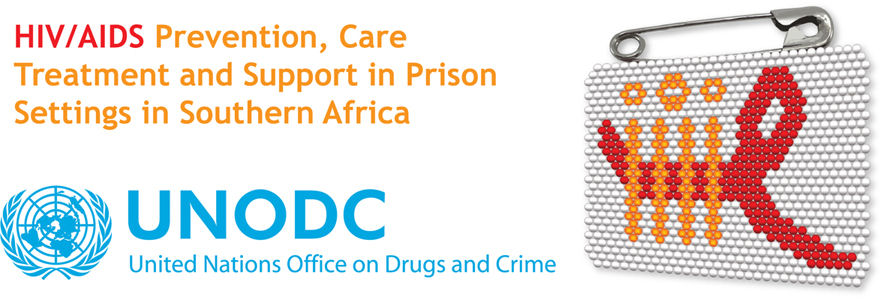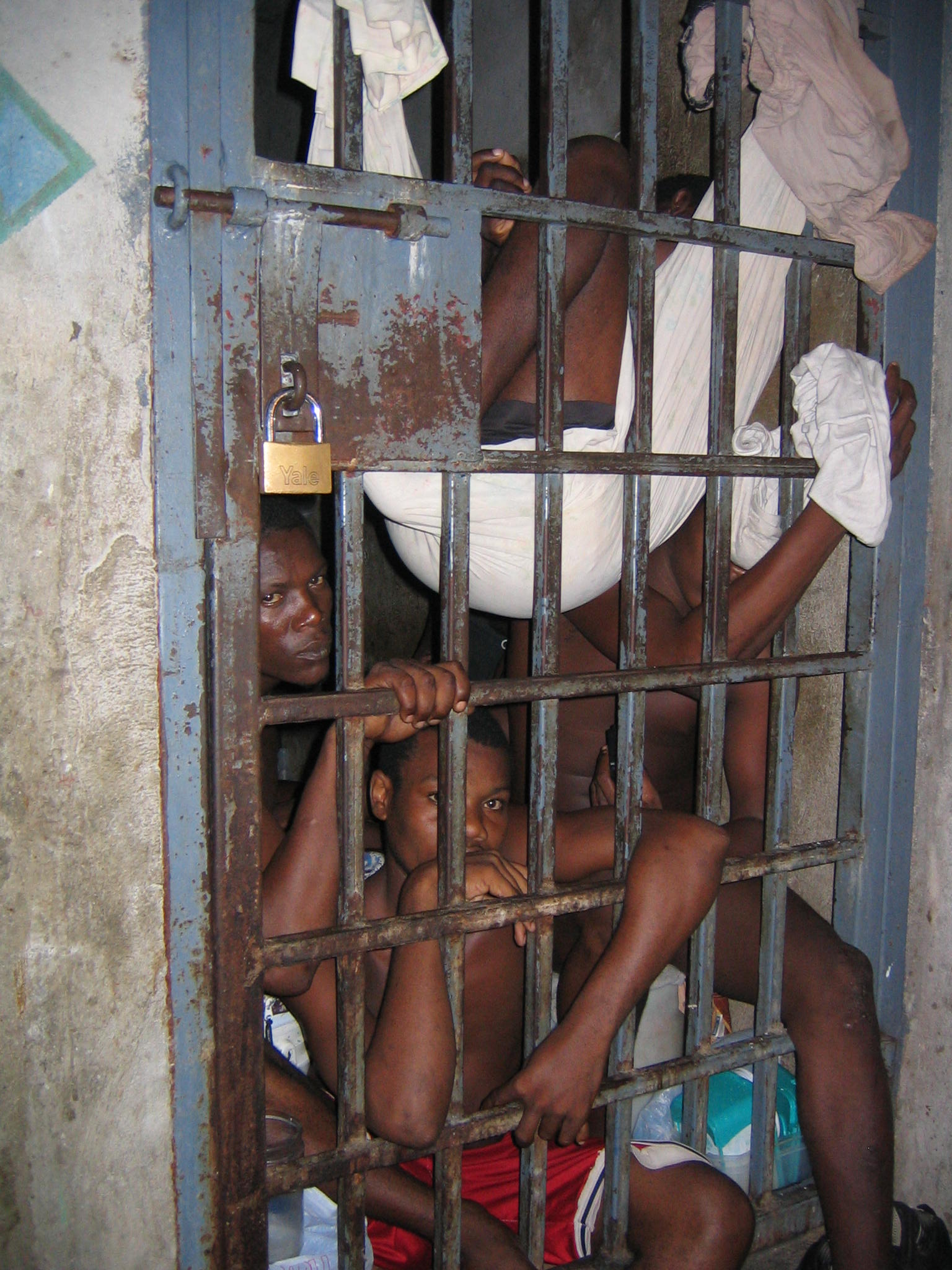Prison Settings

|
UNODC is the custodian of the United Nations Standard Minimum Rules for the Treatment of Prisoners andassists countries in implementing international standards and United Nations resolutions that ensure all inmates have the right to receive health care, including HIV prevention and care, without discrimination and equivalent to those available in the community. Prison settings include, in addition to regular prisons, police lock-ups, pre-trial detention centres, closed institutions for juveniles in conflict with the law and camps, where drug user are forced into mandatory labour as a means of 'rehabilitation'.
High Prevalence Rates
Prison settings is a high risk environment for HIV transmission occurring through the sharing of contaminated injection equipment among injecting drug users, unsafe sexual practices, unsafe skin piercing and tattooing practices as well as blood-to-blood transmission resulting from violence and injuries.
At any given time, there are about 10 million men, women, young people and children held in prison settings around the world, with about 668,000 of these incarcerated in sub-Saharan Africa. Although prison population rates vary significantly between sub-regions and to a lesser extent between countries of the same region, Southern African countries maintain the highest rates as well as the highest percentage of prisoners on the continent.
Worldwide, the levels of HIV infection among prison populations tend to be much higher than in the population outside prisons. Even in many countries where HIV prevalence in the community as a whole is low, it is a serious health threat for prison populations, and presents significant challenges for prison and public health authorities and national governments. This situation is often accompanied and exacerbated by high rates of other infectious diseases such as hepatitis and tuberculosis. The generally accepted principle that prisons and prisoners remain part of the broader community means that the health threat of HIV within prisons, and the health threat outside of prisons, are inextricably linked and therefore demand coordinated action.
Internationally, high HIV prevalence in prisons reflects two main scenarios:
- Countries in which there are high HIV prevalence rates among injecting drug users, many of whom spend time in prison, and some of whom continue to inject while incarcerated. In these countries, high HIV prevalence rates (and hepatitis C) are related primarily to sharing of injecting equipment outside and inside prison; and
- Countries in which there is high HIV prevalence in the general population, driven primarily by unsafe heterosexual sex. Although high HIV prevalence among prisoners is related to high HIV prevalence in the wider population as a whole, the continued spread of HIV within the prisons in these countries is especially related to sexual contact (primarily men having sex with men) and unsafe medical practices.
Regional Consequences
In a region that boasts the world's highest rates of HIV in the population outside of prisons, the latter scenario is most relevant to Southern Africa. However, and although the main driver of the HIV pandemic in Southern Africa is multiple concurrent partners along with a low level of condom use, there is mounting evidence of increasing injecting drug users in a number of Southern African countries.
In addition to drug use and unsafe sexual practices, factors such as extreme prison overcrowding, inadequate nutritional provisions, poor health services, men having sex with men, unsafe tattooing and blood rituals, violence, corruption and poor prison management, make prisons a high-risk environment for transmission of HIV, tuberculosis and other communicable diseases. The lack of knowledge and education amongst prisoners about the risks of contracting and transmitting HIV, along with the absence of protective measures and proper health services, increases their risks of infection. Within this environment the risks for staff and in turn, their families, also increases.
Worldwide there is a very high turnover in the prison population (almost 30 million annually) as most prisoners are also incarcerated for short period of time. Upon release, and despite having been at high-risk exposure for HIV transmission whilst in prison, most return to the community where they engage in pre-existing sexual behaviour of multiple concurrent partners and IDU.
Although there is generally accepted recognition that prisons present a high-risk environment for the transmission of HIV there remains serious gaps in most countries' response and attitude to it. Available information on the prevalence of HIV and the extent of high-risk behaviours and practices such as IDU and unprotected sex in prison settings is vague, drawn from statistically non-representative samples from a limited number of countries. The lack of information is in part due to government's sensitivities to the collection and subsequent release of data necessary to mount, monitor and evaluate an effective response to the epidemic.
Tackling the Problem

|
As a result and for the most part, strategies to address HIV in prisons are isolated and not well situated within national HIV action plans and strategies. This, in spite of the fact that the very nature of imprisonment provides a tremendous public health opportunity for screening, counselling and treating this high-risk population that will eventually return to the community.
While prison authorities have a central role in implementing effective measures and strategies to address HIV/AIDS, this task is not solely the responsibility of prison systems. Maximizing the scope, quality, diversity, and effectiveness of prison-based HIV/AIDS prevention, care treatment and support initiatives in Southern Africa requires cooperation and collaborative action that integrates the mandates and responsibilities of various local, national, and international stakeholders.
The development and implementation of policies and initiatives to address HIV and AIDS in Southern African prisons therefore requires input, support and ownership at all levels; namely at the policy level, prison management level and at service provider level. It requires interventions from relevant international bodies and organizations and by all authorities of national governments including those with responsibility for prisons, public health, national aids plans, legal and legislative development, law enforcement and the courts.
The involvement and full participation of individuals and communities most vulnerable to HIV and incarceration, civil society organizations, and those providing services for prisoners and former prisoner is also central to the development of interventions. The important role that prison staff and their representative organizations play along with researchers, relevant professional organizations, prisoners and former prisoners, and people living with HIV must not only be recognized, but they must also be provided with mechanisms for their meaningful participation.